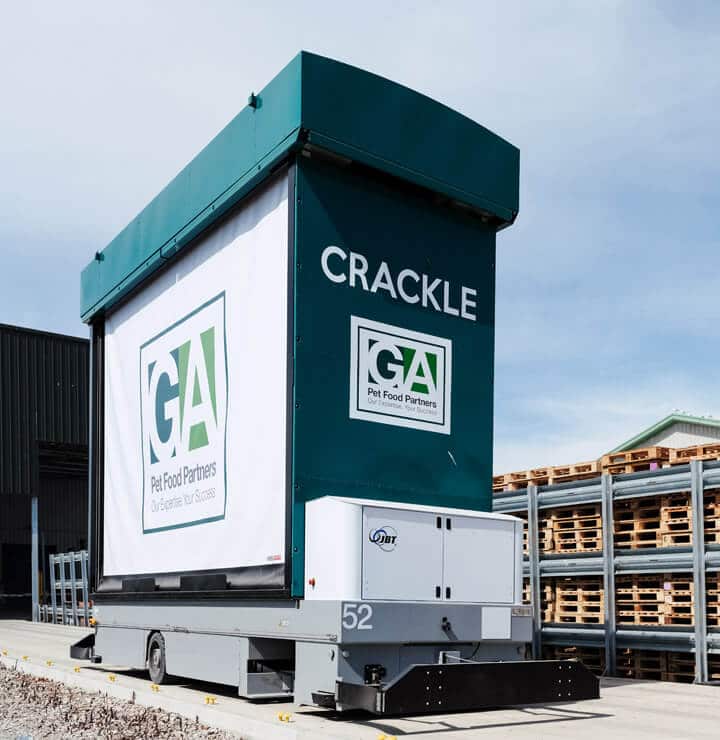The Ingredients Kitchen
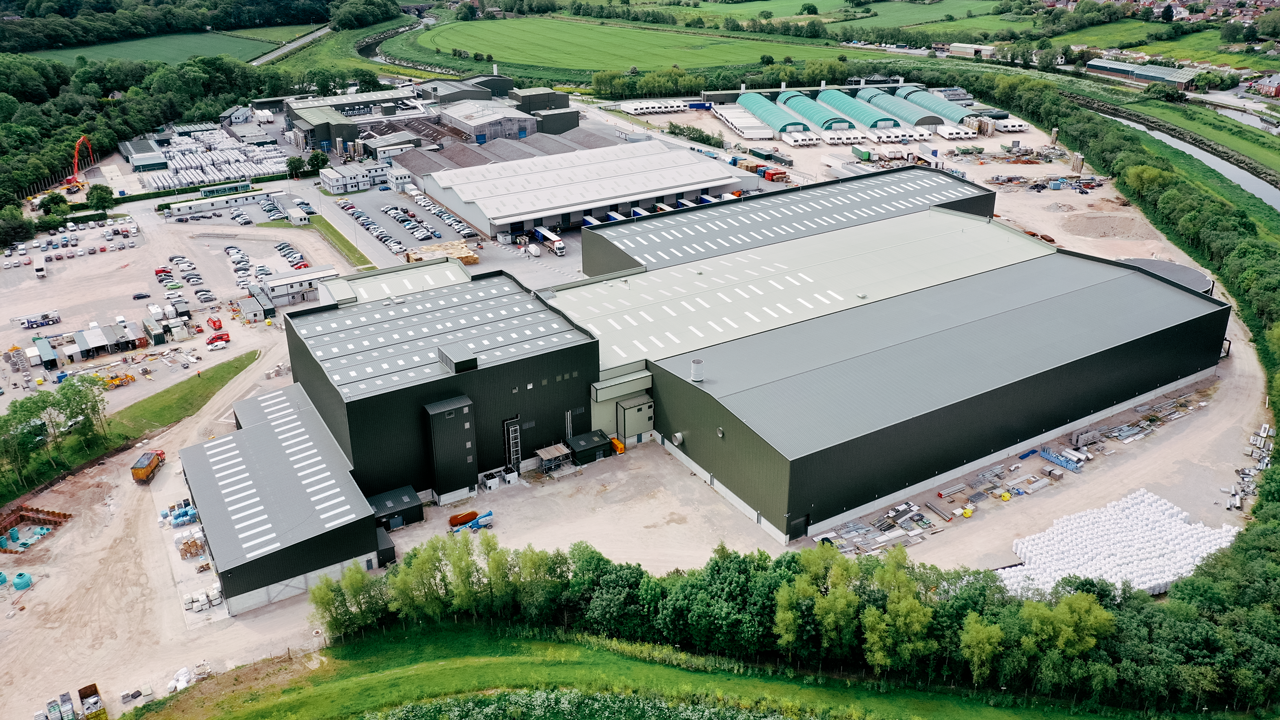
Our obsession with the world’s finest pet food and ingredients has led us to invest over £80 million in building a state-of-the-art Ingredients Kitchen that tests, processes and stores these exceptional ingredients and finished products.
This investment guarantees that our partners can have complete confidence in the provenance and traceability of every recipe produced at GA Pet Food.
Working with more than 700 ingredients and over 800 different formulas, we have faced the challenge of automating a highly complex system. In true GA style, this has resulted in significant investment and the collaboration of numerous organisations worldwide to deliver a cutting-edge solution for all our partner brands.
We also utilise automated guided vehicles (AGVs) to assist in moving ingredients and foods on site. Three software companies have collaborated to automate the entire plant, with the aim of eliminating human error.
Additionally, as part of our ambitious expansion, we will establish a new dark store/warehouse that will operate exclusively with robots.
Our Investment. Your Future.
Roger Bracewell
Chairman’s Comment on the Ingredients Kitchen
The Ingredients Kitchen has two separate functions, each designed and built to benefit every one of our valued partners. Firstly, it enables the testing and quarantine of 367 dry raw ingredients, which are stored and dosed separately into 1.5‑tonne batches. These ingredients are then ground and held ready for extrusion, thereby avoiding any potential delay.
Secondly, it facilitates the storage of 758 different extruded kibble varieties in 15,000 individual boxes within the Larder – each box containing approximately 600 kg of finished product – so that the product can be tested prior to packing and subsequently packed into one of 7,000 different bag formats.
The entire process enables us to track and trace every ingredient used in each bag sold to the end consumer, guaranteeing safety through comprehensive monitoring at every stage.

How Does It Work?
Bulk Intake
At the heart of creating exceptional pet food are meticulous ingredient selection and rigorous testing. Over 600 ingredients from more than 130 suppliers are carefully chosen for use in the Ingredients Kitchen. Every ingredient must pass our stringent tests before it is accepted; GA Pet Food’s automated sampling and testing capabilities set the global standard.
Barley, wheat and rice, along with other bulk ingredients delivered either loose or in tote bags, arrive at the bulk delivery area where they pass through two magnets designed to detect and extract any metal present.
At this point, automated sampling occurs. The system calculates the intake time of each delivery to collect random samples throughout the entire batch, ensuring consistent testing. Samples are collected, labelled and sent to the laboratory for analysis, with results typically available within 48 hours.
Once they pass inspection, the ingredients are transferred to one of our ninety quarantine silos – each capable of holding up to 80 tonnes – where they remain until they have met our meticulous laboratory testing criteria. Only then are they transferred via a track system to storage above the Ballroom, ready for dosing in line with manufacturing orders.
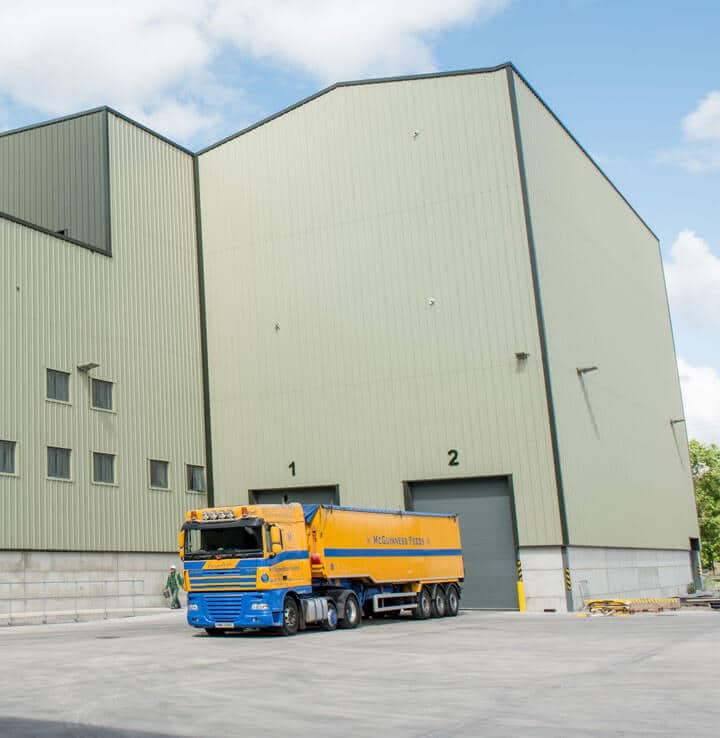
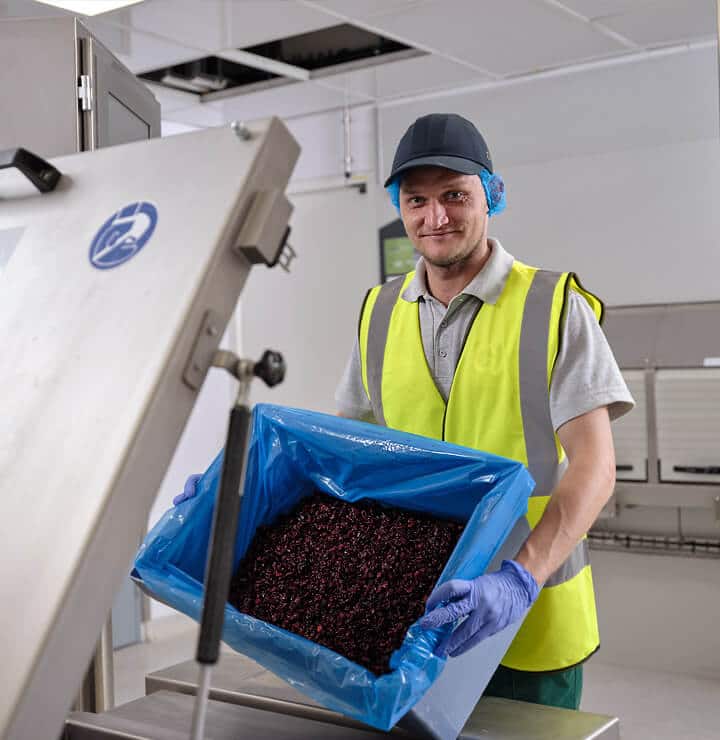
The Ballroom
The Ballroom is where all the ingredients from the three different weighing methods are brought together and combined in a Batch Container (BC). The bulk dosing bins enter, the ingredients from the automated weighers are poured in, and the final components are added in the operator tipping room. Up to three manufacturing orders can be processed simultaneously.
Once dosed, the BC is elevated several levels, where the ingredients are mixed and passed through a grinder. A sieve ensures that any material too fine bypasses the grinder. The ground material is then returned to the original BC, which is brought back to the Ballroom level.
Certain materials that are not suitable for grinding are dosed separately after the other ingredients have been ground. These are placed into green boxes and added to the BC mix separately at the pre-extrusion stage, that is, just before entering the extruder.
Hand Ingredients
The Pick-and-Mix system has been designed to produce up to 22,500 pick-and-mix boxes per year, at a maximum output capacity of 120,000 tonnes per year – approximately 62 boxes per day. Our buyers source from over 130 trusted suppliers spanning more than 50 countries, providing our partners and GA Pet Food with over 600 different ingredients ranging from frankincense, marigold, aniseed and cinnamon to papaya and dried insects, all to create outstanding and unique recipes.
Our new Pick-and-Mix facilities within the Ingredients Kitchen deliver precise dosing capabilities, even for materials that are difficult to handle or particularly delicate. Small or micro-ingredients are dosed reliably by hand when automated systems cannot achieve the precise tolerances and reliability required by our standards.
The Kardex system minimises operator error by monitoring the location of every blue box and controlling which box is presented to the operator, while the RFID system used at the tipping stations, in conjunction with our Genesis system, ensures consistent operator accuracy.
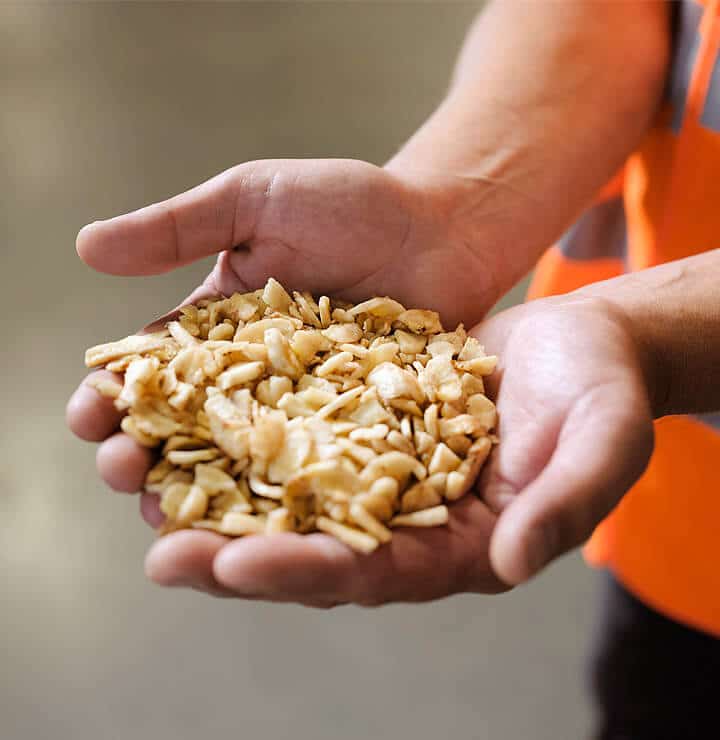
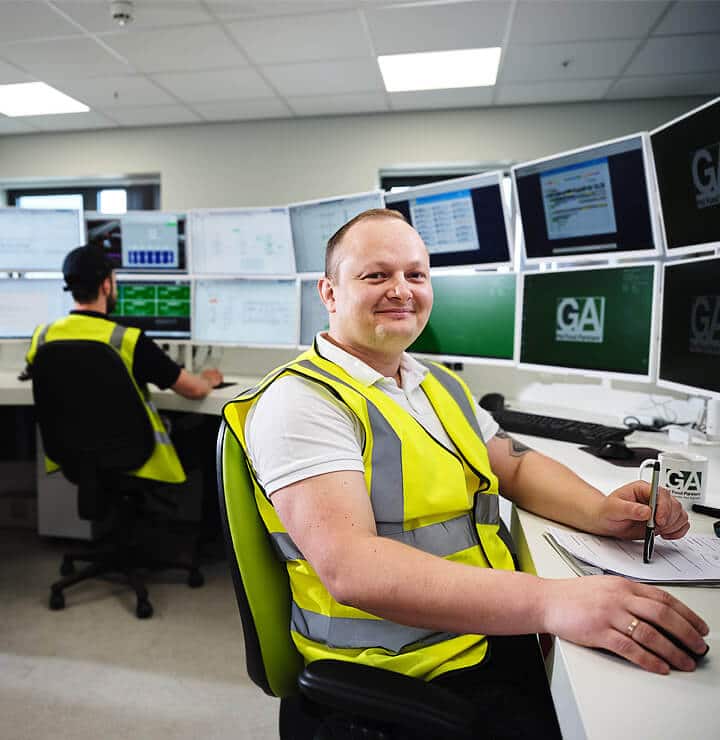
Ingredients Intake
We have developed our own proprietary IT software, Genesis, to monitor, manage and control every aspect of the Ingredients Kitchen. By utilising RFID tagging and continuous sampling, we provide absolute reassurance for our partners and ensure the highest quality for pets.
Upon delivery, identification labels are printed and affixed to every pallet and tote to prevent confusion during sampling and stock registration. The raw ingredients are then registered, sampled and stored in the quarantine area until laboratory testing is completed. Each ingredient follows a pre-set sampling policy that determines how it should be sampled and which tests should be conducted. Laboratory technicians carry out the sampling in accordance with the instructions provided by Genesis.
Once the materials have been successfully tested, Genesis sequences their movement (via FLT) to one of the three pallet and tote intake pits. Each pallet or tote is scanned upon arrival so that Genesis recognises the new ingredient, ready for processing.
The Pantry
The Pantry comprises 5,756 red box containers, each capable of holding up to 900 kg of ingredients, giving it a total capacity of over 5 million kilograms. Designed for efficiency and traceability, the Pantry consists of 36 bays across six aisles on eight levels, arranged two deep on each side.
Using the RFID system and control room operations, the Pantry ensures full traceability and optimal ingredient freshness. Henry, one of GA’s automated guided vehicles, transfers approved ingredients contained in red containers from the intake pits to the Pantry shuttle system. Subsequently, one of several automated cranes places the tagged containers in the appropriate locations within the Pantry warehouse.
The Pantry is managed using our Integrated Warehouse Management System (IWS), which monitors the location and status of each container in real time via RFID. To optimise efficiency, ingredients are stored in three distinct zones according to their usage, with the most frequently used materials located in Zone A, which offers the shortest travel time for the crane.
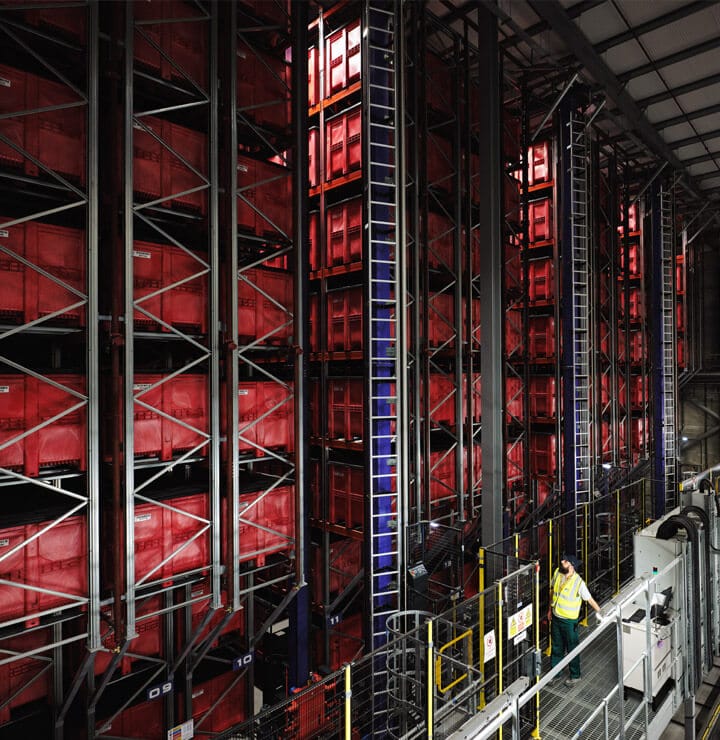
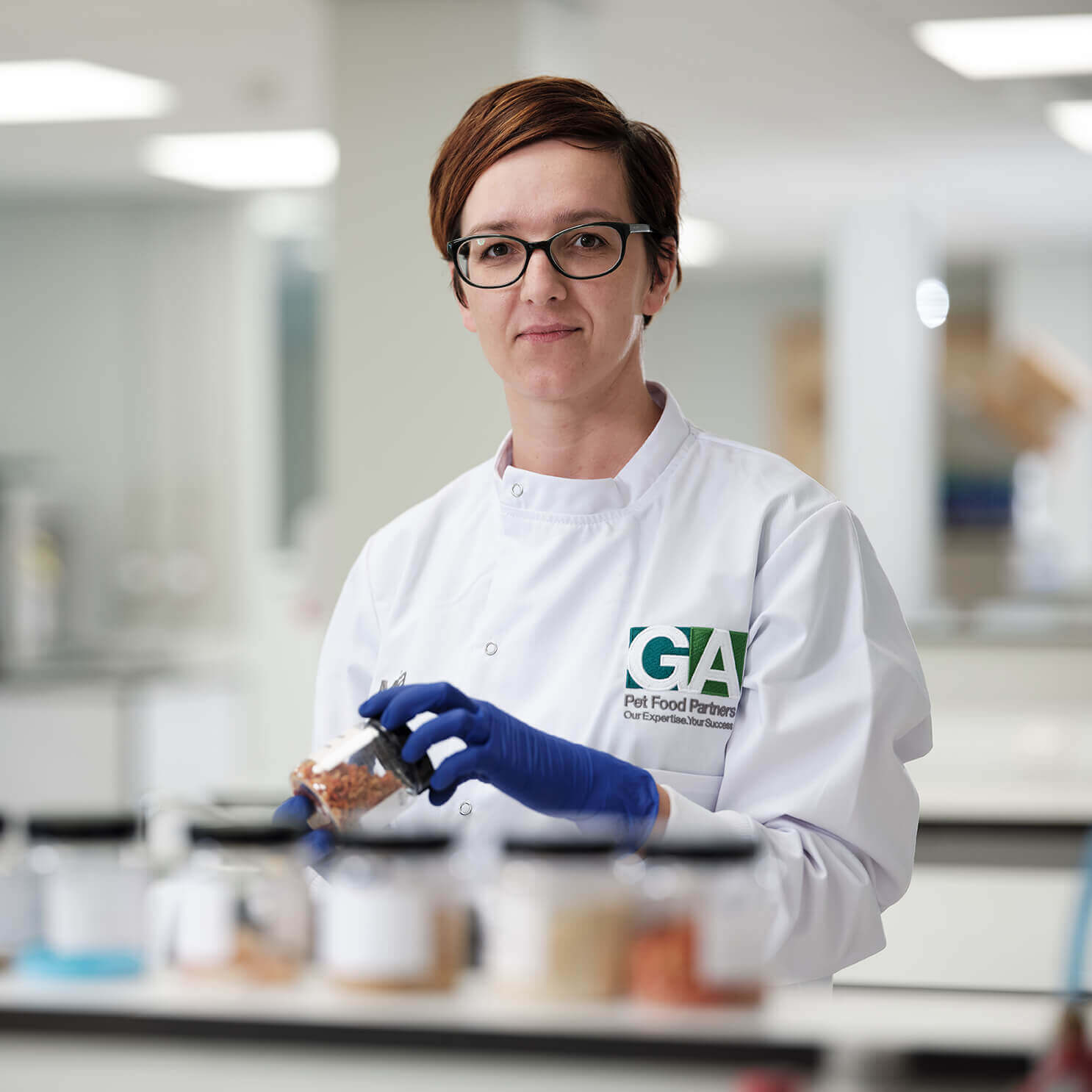
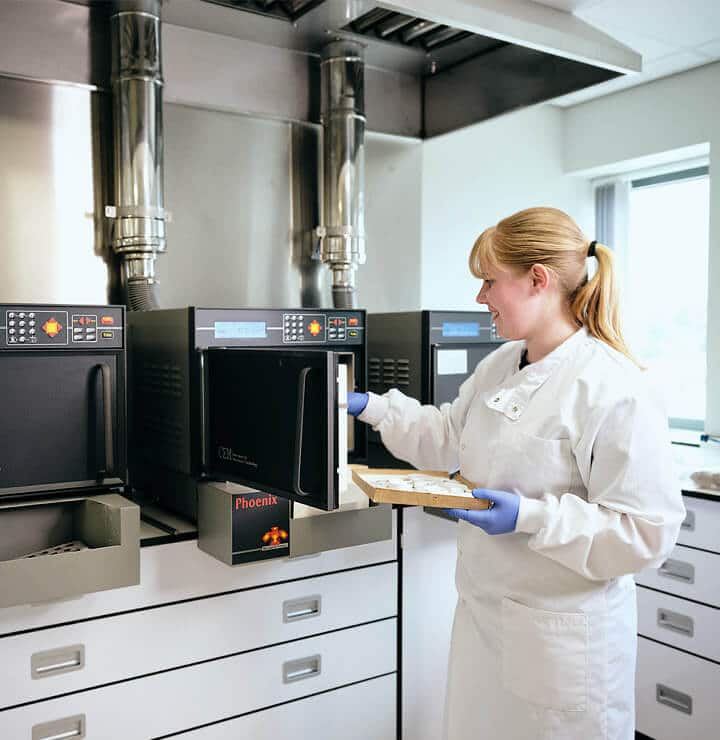
Laboratories
Quality is one of GA Pet Food’s core values, and it is of paramount importance in all aspects of our business, particularly in our onsite laboratory. As a science-led manufacturer, our technicians conduct approximately 1,166 tests per week – including micro-testing, ash, fibre, oil, moisture and protein analysis on all raw and finished products. Our quality and food safety laboratory is designed to be cross-functional, covering nutritional and regulatory compliance, authenticity and micro-profiling, safety, sensory analysis and innovation.
Our expert team provides peace of mind by delivering unrivalled claims and food quality. Investments in the latest technology enable us to supply data on food integrity, ensuring that all products meet regulatory criteria.
The advanced technology allows us to perform many tests in-house that were previously outsourced, giving GA tighter control over testing and dramatically reducing turnaround times.
With the most advanced instruments and outstanding technicians, we can report MOP (moisture, oil and protein) test results in minutes rather than hours.
Every ingredient undergoes numerous quality checks to ensure only the best materials are accepted for use. Each ingredient is assigned a tailor-made testing regime and specification based on its unique attributes and vulnerabilities, with detailed risk assessments conducted prior to purchase, ensuring full traceability of every product.
The laboratory team coordinates testing using a defined process. Each new sample is assigned a unique barcode, which is printed on a label and affixed to the sample container. The sample is scanned and deposited at the raw material drop-off point in Laboratory 1, before being transferred to Laboratory 2, where it is scanned using an NIR test machine. Microbiological testing for Salmonella and Enterobacteriaceae is then carried out.
The raw ingredients are subsequently entered into Genesis to determine the required wet chemistry testing – including MOPFA (moisture, oil, protein, fibre, ash) – which we can now complete within 48 hours. The laboratory works closely with both the Raw Materials and Quality Control departments, who release finished products only after approval via our stringent testing protocols.
The Larder
The Larder is capable of holding between 9.8 and 12 million kilograms of pet food and is fully controlled, providing up-to-the-minute information on partner stock. The blue containers – known at GA as BFCs (Blue Finished Containers) – are transferred to the warehouse cranes for storage via a shuttle transfer vehicle. These vehicles move along tracks in a continuous loop, collecting BFCs from the Parlour and delivering them to the Larder.
The Larder can store 14,864 boxes, each containing between 650 and 800 kg of pet food ready for packing. This highly responsive and controlled environment is capable of handling approximately 78 box movements per hour.
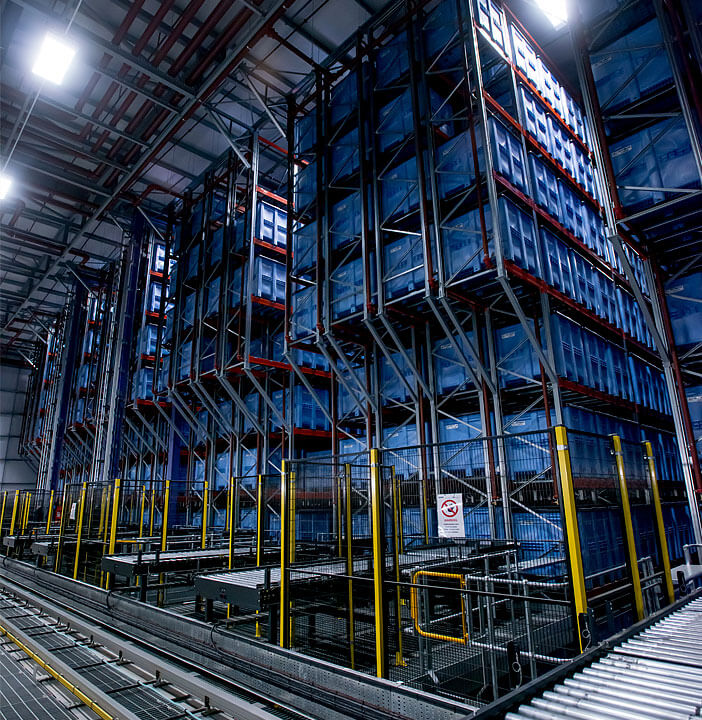

What is an Automated Guided Vehicle (AGV)?
GA Pet Food utilises two types of automated guided vehicles (AGVs) within the Ingredients Kitchen, named “Henry” and “Arthur”. Designed and engineered for GA by an American technology company, Henry and Arthur are reliable and productive additions to our team.
Henry is the fastest, travelling at 2 m/s and weighing 1.5 tonnes. Arthur is considerably heavier at 2.5 tonnes and, understandably, is slightly slower at 1.8 m/s.
Both vehicles are guided by laser strips that navigate their routes, and the control room monitors them via Genesis.
Henry’s role is to transfer red containers to and from the Pantry, while Arthur is responsible for handling the batch containers, moving them between the cellar and the station in preparation for extrusion.
When it is time to recharge their batteries, Henry and Arthur move into a ‘keep-alive’ zone to maintain power while another vehicle replaces their battery with a fully charged one.
Camels and Mules (Europe’s First Outdoor AGVs)
GA Pet Food’s Camel and Mules are Europe’s first outdoor automated guided vehicles (AGVs). Resembling small vans or trucks, they utilise magnetic gyro systems for navigation. Designed and built in America, both vehicles travel at speeds of up to 1 m/s.
We constructed a dedicated road for the Camel and Mules, complete with barriers and traffic lights that enable two-way traffic and provide three crossing paths for other site vehicles. The road is equipped with heat pads to keep it free of frost, ice and snow, thereby ensuring a non-slip surface throughout the year.
After Arthur – one of our other AGVs – has followed its dedicated pathway around the far side of the Pantry and completed its journey at a conveyor in the station area, the batch containers are loaded onto the Camel. The Camel can transport up to three batch containers to the pre-extrusion area in a single journey.
When a recipe has been manufactured, it is placed into a blue container – known as a Blue Finished Container (BFC) – and then transferred via an AGV shuttle called a Mule to the Parlour area in the Ingredients Kitchen building. The Mule is capable of transferring four BFCs in one journey.
